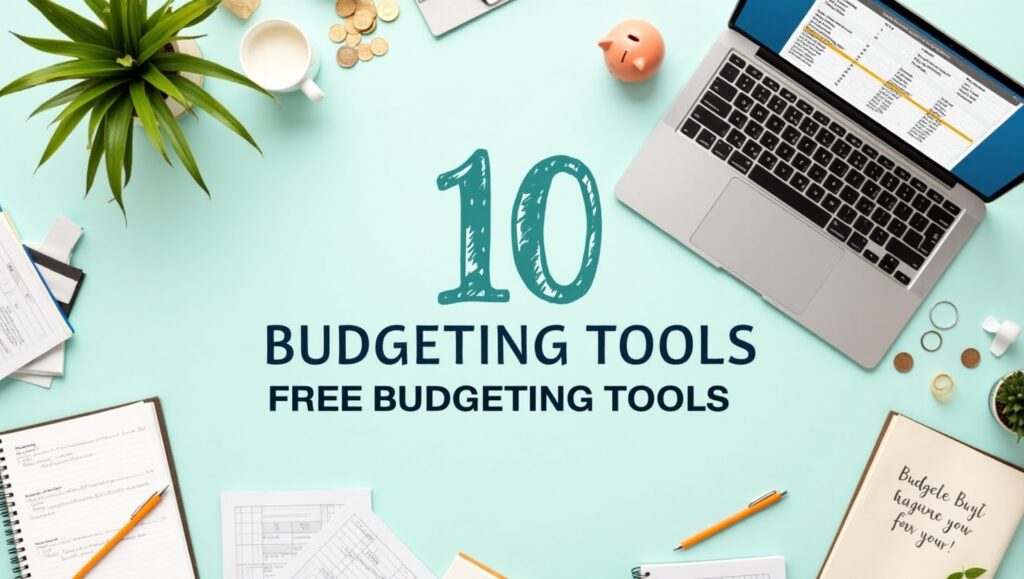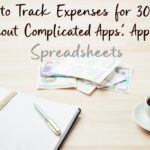Disclaimer: The information in this blog post is for educational purposes only and should not be considered as professional financial advice. I am not a financial advisor or consultant. The recommendations shared here are based on my personal research and learning journey in financial education. Always consult with a qualified financial professional before making significant financial decisions.
If you’re reading this, chances are you’ve experienced the rollercoaster of irregular income firsthand. One month you’re celebrating a windfall project, and the next, you’re wondering how you’ll cover basic expenses. After diving deep into financial education through books, podcasts, and countless articles, I’ve discovered that traditional budgeting advice simply doesn’t work for those with unpredictable paychecks.
The challenge isn’t just about discipline—it’s about finding tools that actually understand the unique reality of irregular income. Whether you’re a freelancer, contractor, small business owner, or gig worker, managing finances with fluctuating earnings requires a completely different approach. Fortunately, there are excellent free tools designed specifically for this challenge.
Related Reading: For more insights on building financial stability, check out our comprehensive guide on emergency fund strategies for irregular income earners.
Quick Summary: Top Free Budgeting Tools for Irregular Income
Before we dive deep, here’s a snapshot of the most effective free budgeting tools for irregular income:
• EveryDollar – Zero-based budgeting with irregular income features • Google Sheets/Excel – Customizable templates with advanced formulas • Goodbudget – Envelope budgeting method for variable income • Honeydue – Couples budgeting with shared irregular income tracking • Personal Capital – Net worth tracking and cash flow analysis • Toshl Finance – Visual budgeting with irregular income smoothing • Wally – Simple expense tracking with income fluctuation features • MoneyStrands – Automated categorization for irregular earners • Budgetpulse – Web-based budgeting without bank linking • PearBudget – Straightforward budgeting for variable income
Now, let’s explore each tool in detail and discover how they can transform your financial management.
Understanding the Irregular Income Challenge
Managing money with irregular income presents unique obstacles that traditional budgeting methods simply can’t address. Unlike salaried employees who receive predictable monthly paychecks, irregular income earners face constant uncertainty about when and how much money will arrive.
Research from the Bureau of Labor Statistics shows that over 36% of workers now participate in the gig economy in some capacity, making irregular income management increasingly relevant. Additionally, the challenge extends beyond just timing—irregular income often means dramatic swings between feast and famine months.
The psychological impact cannot be understated either. Financial stress from unpredictable income affects decision-making, often leading to either overspending during good months or excessive restriction during lean periods. Consequently, effective budgeting tools for irregular income must address both the practical and emotional aspects of financial management.
Why Traditional Budgeting Fails
Most budgeting advice assumes steady monthly income, which creates several problems for irregular earners:
Monthly Budget Rigidity: Traditional monthly budgets become meaningless when your income varies by 50% or more between months. What works in a $5,000 month fails completely in a $2,000 month.
Timing Mismatches: Bills arrive on schedule, but income doesn’t. This mismatch creates constant cash flow challenges that standard budgeting methods don’t address.
Emotional Spending Cycles: Without proper tools, irregular earners often swing between feast-mode spending and famine-mode restriction, neither of which builds long-term financial stability.
10 Free Budgeting Tools That Actually Work
1. EveryDollar – Zero-Based Budgeting for Variable Income
EveryDollar stands out as one of the most effective free budgeting tools for irregular income earners. Created by Dave Ramsey’s team, this app implements zero-based budgeting principles while accommodating income fluctuations.
Key Features for Irregular Income:
- Variable income planning templates
- Priority-based expense allocation
- Month-to-month budget adjustments
- Free tier includes all essential features
The app’s irregular income budget planning form helps you prioritize expenses based on importance rather than traditional categories. Moreover, you can easily adjust your budget as income changes throughout the month, making it incredibly flexible for unpredictable earnings.
Best For: Beginners who want structured guidance without complexity Limitation: Limited investment tracking in free version
2. Google Sheets/Excel – Ultimate Customization
Sometimes the most powerful tool is the simplest. Google Sheets and Microsoft Excel offer unmatched flexibility for creating custom budgeting systems tailored to irregular income patterns.
Advanced Features You Can Build:
- Rolling 3-month income averages
- Automated expense categorization
- Cash flow forecasting formulas
- Visual income trend analysis
I’ve personally created templates that calculate my “survival income”—the minimum needed to cover essential expenses—and track it against actual earnings. Furthermore, you can build sophisticated formulas that automatically adjust spending recommendations based on recent income trends.
Pro Tip: Start with existing templates from Vertex42 or create your own using online tutorials.
Best For: Users comfortable with spreadsheets who want complete control Limitation: Requires time investment to set up effectively
3. Goodbudget – Digital Envelope Method
Goodbudget modernizes the envelope budgeting method, making it particularly effective for irregular income management. Instead of monthly allocations, you can fund envelopes as money comes in.
Irregular Income Advantages:
- Allocate money immediately upon receipt
- Visual spending limits prevent overspending
- Sync across multiple devices
- Free version includes 10 envelopes
The envelope system naturally accommodates irregular income because you’re only spending money you’ve already allocated. Additionally, the visual nature helps prevent the common irregular income trap of overspending during high-earning periods.
Best For: Visual learners who prefer tangible spending limits Limitation: Free version limited to 10 envelopes
4. Honeydue – Couples Managing Irregular Income
Honeydue excels when couples need to coordinate budgeting with one or both partners having irregular income. The app’s communication features prevent financial surprises and promote transparency.
Unique Couple Features:
- Shared expense tracking
- Income notification system
- Comment threads on transactions
- Bill reminder sharing
When one partner has irregular income, communication becomes crucial for financial stability. Honeydue’s notification system alerts both partners when income arrives, enabling real-time budget adjustments.
Best For: Couples where one or both have irregular income Limitation: Less useful for single users
5. Personal Capital – Net Worth Focus
While primarily known for investment tracking, Personal Capital offers powerful cash flow analysis tools perfect for irregular income earners. The free version provides comprehensive financial overview capabilities.
Cash Flow Analysis Features:
- Monthly income/expense trends
- Net worth tracking over time
- Spending categorization
- Financial goal monitoring
Instead of focusing solely on monthly budgets, Personal Capital helps you understand long-term financial trends. This perspective is invaluable for irregular income earners who need to see beyond monthly fluctuations.
Best For: Users wanting long-term financial perspective Limitation: Limited budgeting features compared to dedicated budget apps
6. Toshl Finance – Visual Budget Management
Toshl Finance combines attractive visual design with practical irregular income features. The app’s graphical approach makes it easy to understand spending patterns and income trends.
Visual Management Tools:
- Colorful spending graphs
- Income smoothing features
- Tag-based categorization
- Multi-currency support
The app’s “smoothing” feature is particularly helpful for irregular income earners. It averages your income over time, providing a more stable baseline for budgeting decisions.
Best For: Visual learners who appreciate attractive interfaces Limitation: Some advanced features require premium subscription
7. Wally – Simple Expense Tracking
Wally focuses on simplicity while accommodating irregular income patterns. The app’s photograph-based expense tracking makes it easy to capture spending in real-time.
Simplicity Features:
- Photo-based receipt capture
- Location-based spending tracking
- Simple income/expense overview
- No bank account linking required
For irregular income earners who find complex budgeting overwhelming, Wally provides essential tracking without complexity. The visual receipt system also helps during tax season for business expense documentation.
Best For: Users wanting simple, photo-based expense tracking Limitation: Limited advanced budgeting features
8. MoneyStrands – Automated Irregular Income Management
MoneyStrands uses automation to simplify budgeting for irregular income earners. The app’s intelligent categorization learns your spending patterns over time.
Automation Features:
- Smart transaction categorization
- Irregular income pattern recognition
- Automated bill tracking
- Social spending features
The app’s pattern recognition is particularly valuable for irregular income earners whose spending varies significantly between high and low earning periods.
Best For: Users who prefer automated financial management Limitation: Requires time for AI to learn spending patterns
9. Budgetpulse – Web-Based Flexibility
Budgetpulse offers web-based budgeting without requiring bank account connections. This approach provides security while maintaining flexibility for irregular income management.
Security-Focused Features:
- Manual transaction entry
- Web-based accessibility
- No bank linking required
- Simple goal tracking
The manual entry requirement actually benefits irregular income earners by encouraging mindful spending awareness. Moreover, the web-based platform works on any device without app downloads.
Best For: Security-conscious users preferring manual entry Limitation: More time-consuming than automated alternatives
10. PearBudget – Straightforward Variable Income Budgeting
PearBudget provides no-frills budgeting specifically designed for variable income earners. The tool’s simplicity makes it accessible for budgeting beginners.
Variable Income Features:
- Simple income averaging
- Flexible expense categories
- Basic reporting tools
- Clean, distraction-free interface
PearBudget’s strength lies in its simplicity. The tool doesn’t overwhelm users with features but provides essential budgeting functionality for irregular income management.
Best For: Beginners wanting straightforward budgeting Limitation: Limited advanced features or automation
Choosing the Right Tool for Your Situation
Selecting the best budgeting tool depends on several factors specific to your irregular income situation. Consider these key questions when making your choice:
Income Variability Level
Moderate Variability (±30% monthly): Tools like EveryDollar or Goodbudget work well because they can accommodate reasonable income swings without complete budget overhauls.
High Variability (±50% or more monthly): More flexible tools like Google Sheets or Personal Capital better handle dramatic income fluctuations through customizable formulas and long-term trend analysis.
Technical Comfort Level
Beginner-Friendly Options: EveryDollar, Goodbudget, and Wally offer intuitive interfaces with minimal learning curves.
Advanced Users: Google Sheets and Personal Capital provide sophisticated analysis capabilities for users comfortable with more complex tools.
Specific Needs Assessment
Couples: Honeydue’s communication features prevent financial misunderstandings common with irregular income.
Visual Learners: Toshl Finance and Goodbudget use graphical elements to make budgeting more intuitive.
Security-Conscious: Budgetpulse and PearBudget avoid bank linking for users preferring manual control.
Implementation Strategies for Success
Successfully using these tools requires more than just downloading an app. Based on my research and experience, here are proven strategies for implementing budgeting tools with irregular income:
Start with Income Smoothing
Begin by calculating your average monthly income over the past 6-12 months. This “smoothed” income becomes your baseline budget amount, regardless of which tool you choose. Consequently, you’ll avoid the feast-or-famine mentality that destroys financial stability.
Practical Implementation:
- Review 6-12 months of income records
- Calculate monthly average
- Use this amount as your base budget
- Save excess in high-earning months
- Draw from savings during low-earning periods
Prioritize Expenses by Necessity
Unlike traditional percentage-based budgeting, irregular income requires expense prioritization. Rank your expenses in order of absolute necessity:
Priority Level 1: Survival needs (housing, utilities, minimum food) Priority Level 2: Important obligations (insurance, debt minimums, transportation) Priority Level 3: Quality of life improvements (entertainment, dining out, hobbies) Priority Level 4: Luxury spending and non-essentials
Fund priorities in order as money becomes available. This approach ensures essential needs are always covered, regardless of income fluctuations.
Build Buffer Accounts
Most successful irregular income earners maintain multiple buffer accounts:
Expense Buffer: 1-2 months of essential expenses for income gaps Tax Buffer: 25-30% of income for quarterly tax payments Equipment Buffer: Money for business tools and emergency replacements
Automate transfers to these buffers during high-earning periods to smooth out financial fluctuations.
Advanced Tips for Irregular Income Budgeting
After implementing basic budgeting practices, these advanced strategies can further improve your financial stability:
Weekly Money Dates
Schedule weekly financial check-ins to review income, expenses, and upcoming needs. Irregular income requires more frequent monitoring than traditional monthly budgeting.
During these sessions:
- Review the week’s income and expenses
- Adjust spending plans based on current cash flow
- Plan for upcoming irregular expenses
- Update savings goals based on income trends
Seasonal Planning
Many irregular income sources follow seasonal patterns. Analyze your income history to identify:
- High-earning seasons
- Predictable slow periods
- Holiday impact on income
- Industry-specific cycles
Use this information to plan major expenses during high-earning periods and build reserves for predictable slow times.
Multiple Income Streams Tracking
Track each income stream separately to understand which sources provide the most stability. This analysis helps with:
- Business development decisions
- Risk assessment
- Diversification planning
- Emergency planning priorities
FAQ: Common Questions About Budgeting with Irregular Income
Q: How much should I save during high-earning months?
A: Aim to save 30-50% of income above your smoothed average. This percentage should cover both emergency funds and buffers for low-earning periods. However, start with whatever percentage feels sustainable—even 10% provides some protection against income fluctuations.
Q: Should I pay extra on debt during high-earning months?
A: Generally, prioritize building a 3-6 month emergency fund before aggressive debt payoff. With irregular income, cash flow stability is more important than debt optimization. Once you have adequate reserves, then accelerate debt payments during high-earning periods.
Q: How do I handle quarterly tax payments with irregular income?
A: Set aside 25-30% of each payment immediately in a separate tax account. Most budgeting tools allow you to create dedicated savings categories for this purpose. Additionally, consider making monthly estimated payments instead of quarterly to smooth cash flow impact.
Q: What if my income is too unpredictable for any budget?
A: Even extremely variable income can be managed with the right approach. Focus on expense prioritization rather than fixed budget amounts. Fund necessities first, then allocate remaining money to lower-priority categories. The key is flexibility, not perfection.
Q: How often should I update my budget with irregular income?
A: Review and adjust your budget weekly, with more detailed analysis monthly. Irregular income requires more frequent monitoring than traditional budgeting. However, avoid daily obsessing, which can create unnecessary stress and poor financial decisions.
Conclusion
Managing irregular income doesn’t have to mean living in constant financial uncertainty. The right budgeting tools, combined with flexible strategies, can provide stability even with unpredictable earnings. Whether you choose a simple app like Wally or create a sophisticated spreadsheet system, the key is consistent use and regular adjustment.
Remember, budgeting with irregular income is a skill that improves with practice. Start with one tool that matches your comfort level and gradually implement more advanced strategies as you build confidence. Most importantly, focus on progress rather than perfection—even small improvements in financial management compound significantly over time.
The journey to financial stability with irregular income requires patience and adaptability, but it’s absolutely achievable. These tools provide the foundation, but your consistent effort and willingness to adjust create lasting financial success.


